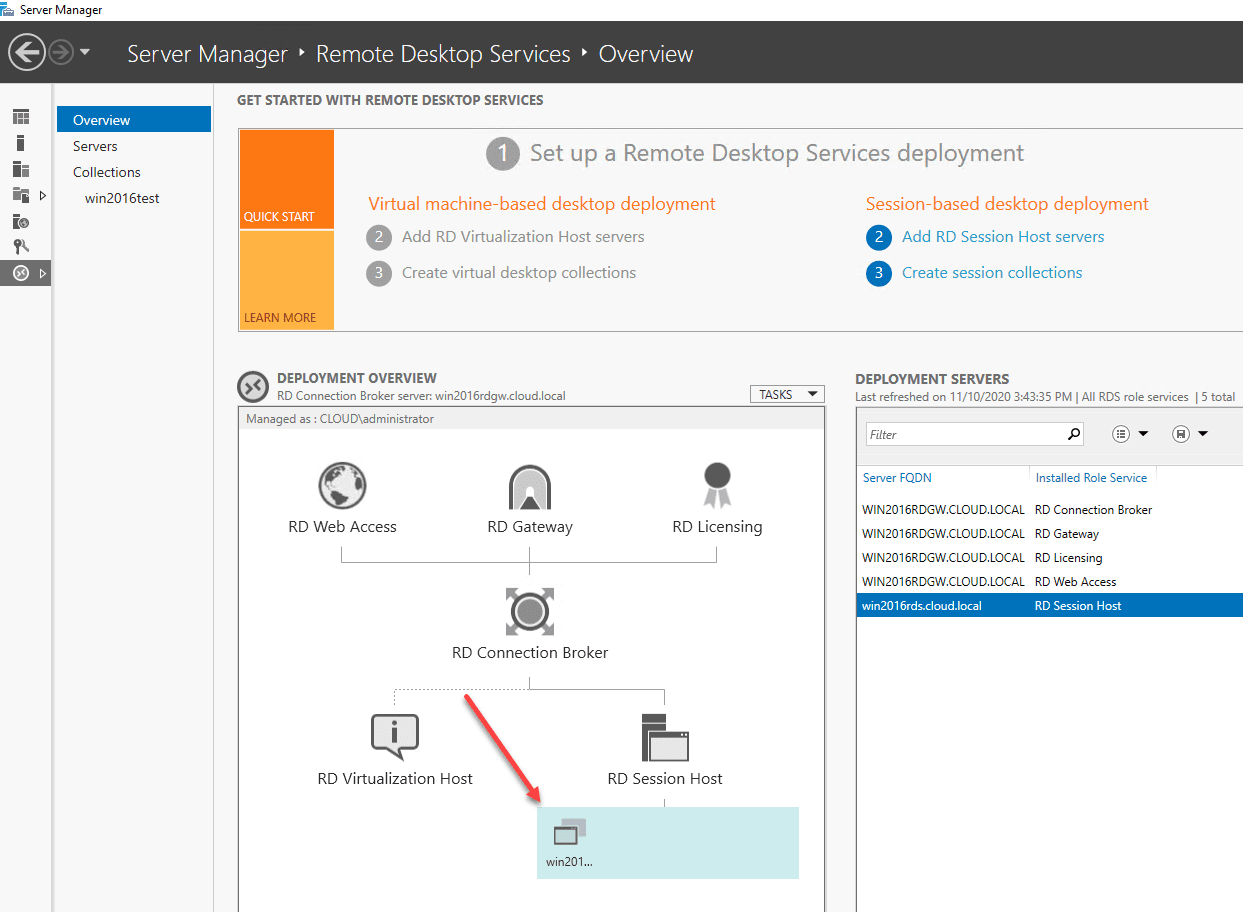


- #Windows server 2016 remote desktop services tools how to#
- #Windows server 2016 remote desktop services tools install#
- #Windows server 2016 remote desktop services tools software#
- #Windows server 2016 remote desktop services tools license#
- #Windows server 2016 remote desktop services tools windows#
The warning says you need to have admin privileges in AD to continue, click Continue.Ĭlick OK to confirm the server has been added to the group.
#Windows server 2016 remote desktop services tools license#
You can see here a warning message that the server is not a member of the license servers group in AD. Next we need to right click the server and select ‘Review Configuration’. Your license should appear in the list of available licenses. I’m using retail license packs here and click Next.Įnter your license key, click Add then Next. Select the license type that you have from the drop down. Now starts the license installation wizard, click Next. Select ‘Automatic Connection’ and press Next.Įnter you company information and press Next.Ĭontinue entering in your info and click Next. From the server manager select Tools then ‘Remote desktop services’ then click ‘Remote Desktop Licensing Manager’.įirst thing we do in the licensing manager is right click the server node and click ‘Activate Server’.
#Windows server 2016 remote desktop services tools install#
Next we need to install our RDS licenses. Here I select Per User because i’ve got a bunch of user cals available. Select the mode based on the RDS cals that you have purchased. Next go back to the server manager and right click on ‘RD Licensing’ and click ‘Select RD Licensing Mode’ from the menu. Just ignore this because in a single server deployment we don’t need a gateway load balancing our connections because we only have one server! We do however need to setup licensing.Ĭlick on ‘RD Licensing’ to start setting it up.Īs before your server should already be selected in the right hand panel but if not select it in the left and move it into the right and click Next.Ĭlick Add to install the licensing role to the server.

Click on it from the menu to see the configuration.Īt this point some will try and configure the RD Gateway option since its green and showing ready to configure. In the server manager you will see the new role ‘Remote Desktop Services’ installed. The installation will start and the server may reboot, if it does then log back in and wait for the install to complete and click on Close. Tick the box to restart the destination server and click on Deploy. Your server should already be in the Selected server list on the right but if not highlight your server from the Server Pool and move it into the selected panel and click on Next. Server manager should automatically launch, click on Dashboard then ‘Add roles and features’.Ĭlick on ‘Remove Desktop Services Installation’ and click Next.Ĭlick ‘Session-based desktop deployment’ and click Next. I’ve still seen lots of engineers struggle to properly configure a single server deployment so lets get stuck in because actually is really easy!įirst install Server 2016 with GUI and get all the updates installed.Īdd the server to the domain as a member server, in this lab I call mine RDS2016.
#Windows server 2016 remote desktop services tools software#
Specialist software which doesn’t run over a VPN or is not cloud based is ideally suited to RDS deployments. We’re seeing less and less RDS deployments but some situations still require some lite RDS access.
#Windows server 2016 remote desktop services tools how to#
Welcome to my guide on how to configure a single server Remote Desktop Services (RDS) deployment using server 2016.
#Windows server 2016 remote desktop services tools windows#
Posted By in Windows Server | 29 comments In the Add or Remove Snap-ins dialog box, click OK.How to Setup a Single Server RDS Deployment Using Server 2016 If you select Another Computer, either type in the name of the computer or use Browse to search for the computer. In the Select Computer dialog box, select whether you want to connect to the local computer or to another computer. Under Available snap-ins, click Remote Desktop Services Manager, and then click Add. On the File menu, click Add/Remove Snap-in. To run Remote Desktop Services Manager from the Microsoft Management ConsoleĬlick Start, click Run, type mmc, and then press ENTER. To run Remote Desktop Services Manager from Server ManagerĬlick Start, point to Administrative Tools, and then click Server Manager.Įxpand Remote Desktop Services, and then click Remote Desktop Services Manager. To run Remote Desktop Services Manager from the Start menuĬlick Start, point to Administrative Tools, point to Remote Desktop Services, and then click Remote Desktop Services Manager.Ĭlick Start, click Run, type tsadmin.msc, and then press ENTER.


 0 kommentar(er)
0 kommentar(er)
